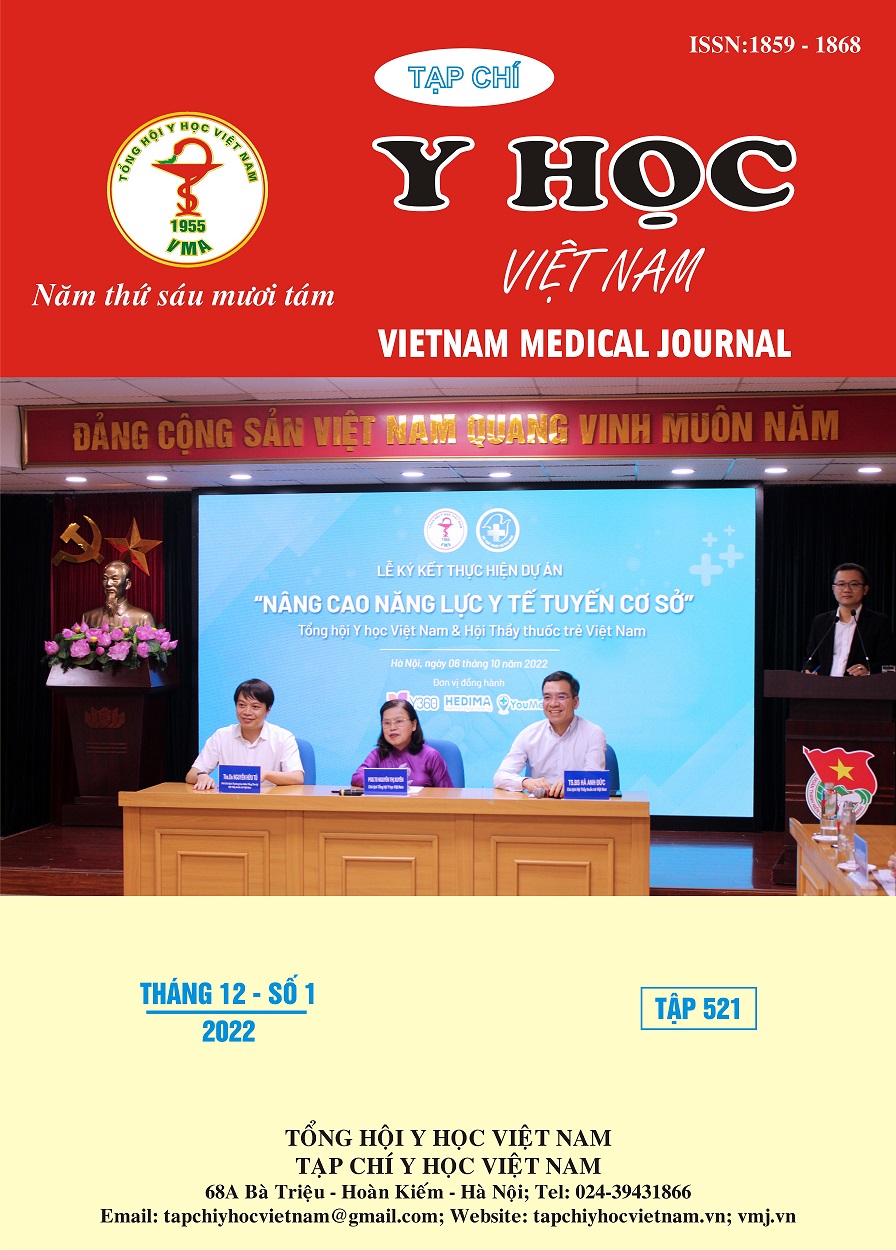MANAGEMENT AND HISTOLOGICAL CHARACTERISTICS OF HEPATIC HEMANGIOMA PATIENTS
Main Article Content
Abstract
Background: Hemangioma is the most common benign tumor in the liver, if the tumor is large, appropriate treatment must be indicated. Objectives: To evaluate treatment indications and histopathological results of hepatic hemangioma patients. Methods: A cross-sectional study of 49 patients diagnosed with hepatic hemangioma based on the guidelines of the EASL. On contrast-enhanced CT image, hemangioma showed enhancement peripheral in arterial phase, afferent enhancement in delayed phase; diagnosed by histopathology when the tumor is not typical enhancement on CT. Results: RFA was the most performed treatment with the rate of 34.7%. Resection and TAE together with the rate of 14.3%. Tumor resection was performed at the youngest age of 42.4 ± 10.9, the RFA group was 48.2 ± 11.4; TAE group is 64.8 ± 23.3; p = 0.01. The average tumor size of the tumor resection group was the highest 7.1 ± 2.7 cm, the RFA group had the lowest size 5.8 ± 2.6 cm, the tumor size of the TAE group was 6.6 ± 1.8 cm, p = 0.01. The mean tumor size of the needle biopsy group was 3.3 ± 0.9 cm, smaller than that of the cold biopsy group, 7.1 ± 2.7 cm, p = 0.009. In 13 patients undergoing biopsies, the benign rate was 100%. Cavernous hemangiomas account for 69.2%, capillary hemangiomas account for 30.8%. Conclusion: It is possible to perform resection, RFA, TAE for hepatic hemangioma patients depending on the case. Hemangioma of large size is still benign in nature.
Article Details
Keywords
Resection, RFA, TAE, histopathological, hepatic hemangioma
References
2. Kalogirou M., Chourmouzi D., Dedes I., et al (2018). Transarterial embolization for the treatment of complicated liver hemangiomas: A report of two cases and review of the literature. Clin Mol Hepatol, 24(3), 345-349.
3. Li T., Klar M. M., Alawad M., et al (2021). Hepatic Sclerosing Hemangioma Mimicking Malignancy: A Case and Literature Review. Am J Med Case Rep, 9(3), 144-146.
4. European Association for the Study of the Liver (2016). EASL Clinical Practice Guidelines on the management of benign liver tumours. J Hepatol, 65(2), 386-398.
5. Yoon S. S., Charny C. K., Fong Y., et al (2003). Diagnosis, management, and outcomes of 115 patients with hepatic hemangioma. J Am Coll Surg, 197(3), 392-402.
6. Xie Q. S., Chen Z. X., Zhao Y. J., et al (2021). Outcomes of surgery for giant hepatic hemangioma. BMC Surg, 21(1), 186.
7. Akhlaghpoor S., Torkian P., Golzarian J. (2018). Transarterial Bleomycin-Lipiodol Embolization (B/LE) for Symptomatic Giant Hepatic Hemangioma. Cardiovasc Intervent Radiol, 41(11), 1674-1682.
8. Amico A., Mammino L., Palmucci S., et al (2020). Giant hepatic hemangioma case report: When is it time for surgery? Ann Med Surg (Lond), 58, 4-7.


